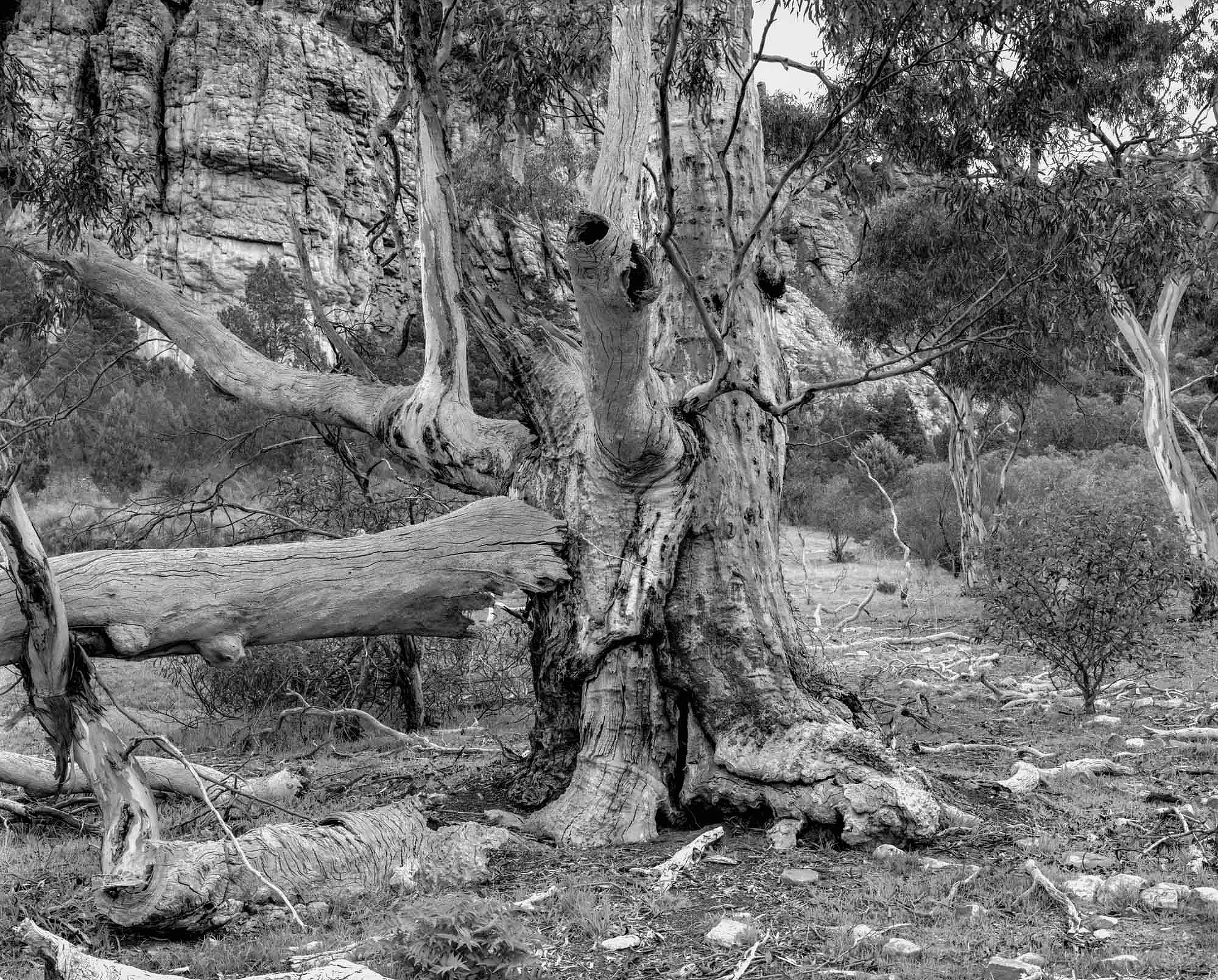
Mount Arapiles, photography, and the dark pastoral – Gary Sauer-Thompson. Part two
I initially visited and explored Mount Arapiles with the now defunct Melbourne-based Friends of Photography Group. I was intrigued by how the state park was surrounded by agricultural land, the rock face being the centre of attention of the climbers, and how the trees and bushes in the open space at the foot of the cliffs were ignored. As I walked along and around the straggly trees in the open ground my experience of being in this landscape was not one of experiencing natural beauty, and my sensations were not ones of pleasure or awe. I was just saddened by the poor condition of what was remnant bush. I thought: how could I interpret this kind of degraded landscape surrounded by agricultural land? How could I photograph this messy, uncared for landscape the context of an environmental crisis? Is there a middle space between Abrams’ oppositional pair of the mirror and the lamp?
One possibility to deconstructing this duality is suggested by postmodernism. This reworks both mirror and lamp into the labyrinth of mirrors, in which the imagination produces only endless reproductions, copies of copies of copies where there is no longer any original. The problem here is that realism has disappeared in a labyrinth of an endless circulation of images. Another possibility is the popular response by many large format photographers to turn to explore the preservation of wilderness in the National Parks in order to represent and celebrate the natural environment. This is tricky as this nature is in the process of being changed by climate heating caused by the continuing use of fossil fuels. This is threatening and destroying the very wild nature being celebrated by the wilderness photographers.
A third possibility is a more complex pastoralism as distinct from the traditional colonial settler one; a pastoralism that rejects the peace, harmony and reconciliation of the human relation to nature and incorporates its counter force – the machine or technology. This was the argument of Leo Marx in his The Machine in the Garden in his interpretation of the contradictory American pastoral: Henry David Thoreau in Walden retreated to wild nature whilst accepting the existence of the railway at the far end of Walden Pond. The pastoral, for Thoreau, was still a haven from industrialization and the anxiety of modern, urban life.
These considerations involved in making 8 x 10 photographs at Mt Arapiles lead me to reject the mirror conception of realism in favour of a complex pastoralism with a critical edge. In a post-colonial Australia this possibility would accept that wildernesss is being shaped by climate heating, it would darken the pastoralism’s sunny and harmonious rural locales, and ironize its bright dreams with the stain of our complicit actions in environmental destruction and the ongoing extinction of Australia’s biodiversity. What emerges from this stain is the dark pastoral — dead trees, dried out wetlands and Ramsar wetlands full of migratory birds turned into marinas and housing estates. The stain of pastoralism opens up a middle ground or space between Abrams’ duality of the mirror and lantern; a realism in which visual art, no matter how formally beautiful, is nevertheless organized through a conceptual framework. Within this opened up space there is a diversity of approaches to photographies about the landscape that are organised through a conceptual framework.
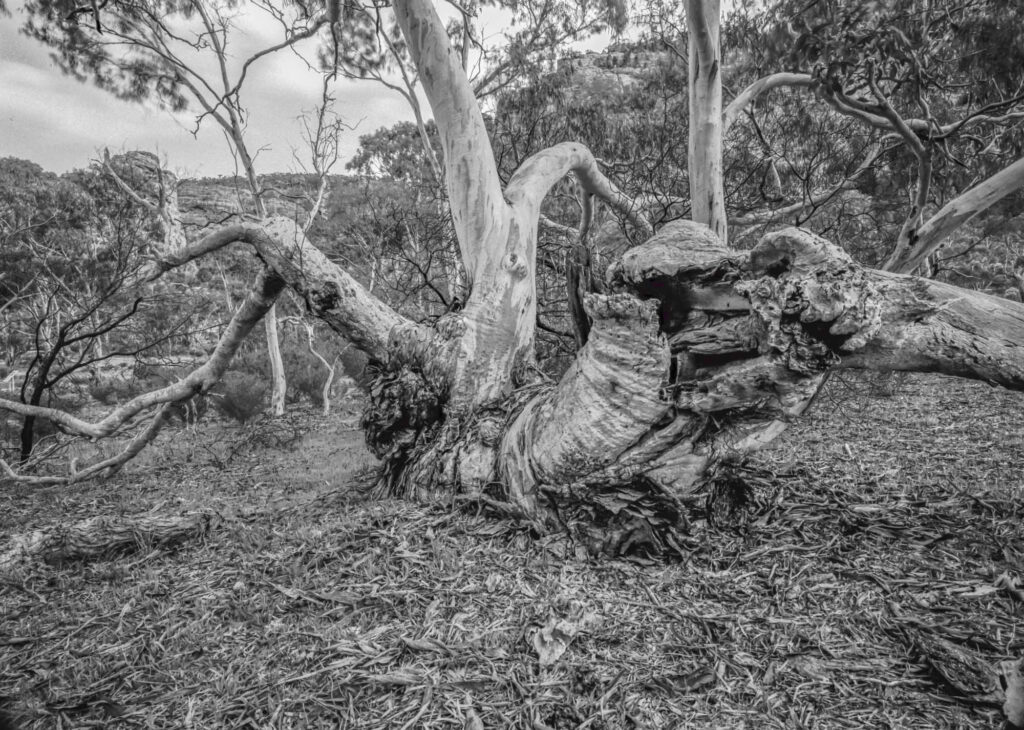
The stained pastoral is the pathway I started to explore at Mt Arapiles when making some black & white 8 x 10 photos of the trees in poor condition in the flat land in front of the imposing cliff- face. The cultural background was the interpretations of pastoralism’s stain in the history of Australian visual art. Thus Fred Williams’ Landscape with a Steep Road (1959), Tree loppers (1955), the axe in Oval landscape (1965-66) or the Chopped Trees series (1965-6) suggest the idea that Williams’s work is concerned with a wounding of the landscape. These are bleak, grim works with their dark vision of the felled tree as a representation of Australian nature in the ongoing clearing of the country for agriculture started by the colonial settlers. This is a re-seeing of the Australian bush or landscape in opposition to the sunny impressionism of the Heidelberg School, the pastoral grandeur of Hans Heysen, or Harold Cazneaux’s tree in the Flinders Ranges. with its references to national character.
My tree photos at Mt Arapiles are an interpretation of the old eucalypt trees surviving in a patch of remnant bush surrounded by agricultural land on all sides. They suggest that, in spite of the recent revaluation of beauty in contemporary aesthetics the aesthetic value of these pictures should be messiness (or ugliness), rather than beauty. The value of the artwork is not bound up with the contemplation of form, dreamscapes, or the representation of mirrors; but in an “imaginative engagement” with (indirectly and sensuously embodied) ideas. They are an interpretation of the history of an uncared for country.
Philosophically speaking, I was making sense of the landscape at Mt Arapiles through a set of background presuppositions: ugliness, agriculture, remnant bush, land clearing, aesthetics, Fred Williams’s paintings and Judith Wright’s poetry. These presuppositions form a framework of understanding known as a hermeneutical circle, which informs and shapes my approach to photographing the trees. This pre-established perspective is a distinctive feature of our existence, and to understand a landscape is akin to knowing one’s way around culturally. It is a basic orientation of a large format, landscape photographer.
This realism with its particular perspective of built-in biases or pre-judgements is grounded and embedded in a horizon of cultural meanings shaped by history, language and tradition. These cultural meanings, which are embodied in language, stand between the photographer and the trees in the landscape; and they shape how we view and interpret the landscape. My particular perspective was an anti-pastoral one within a post-colonial frame of reference.
Reference: Jarrod Hore, Visions of Nature: How Landscape Photography Shaped Settler Colonialism, University of California Press, Oakland, 2022
Part one of this article can be seen here.
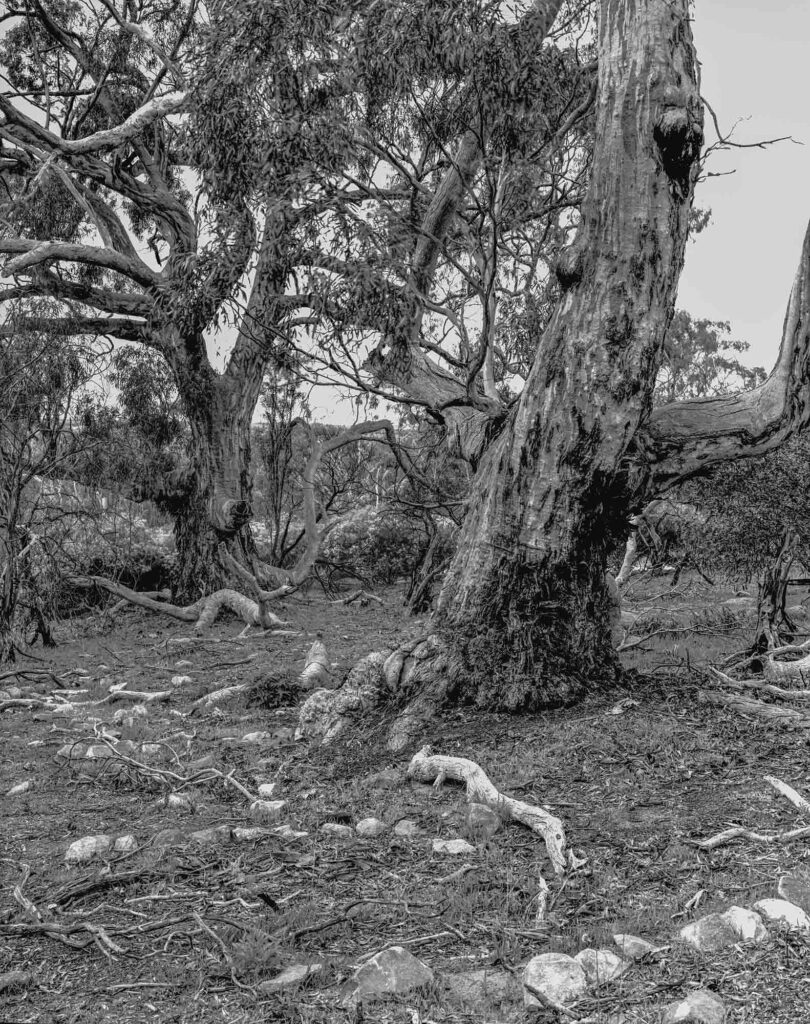
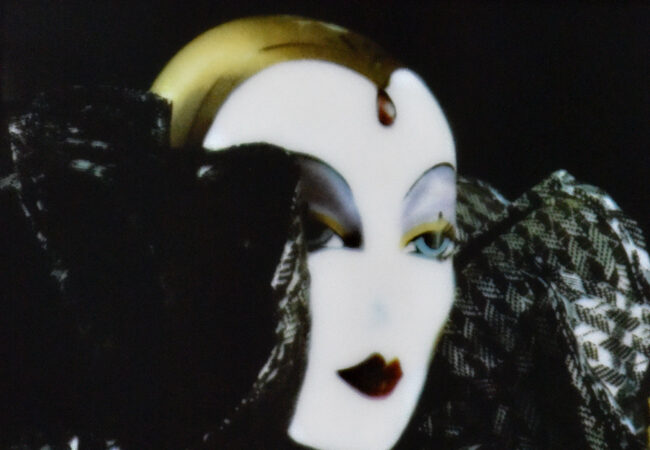

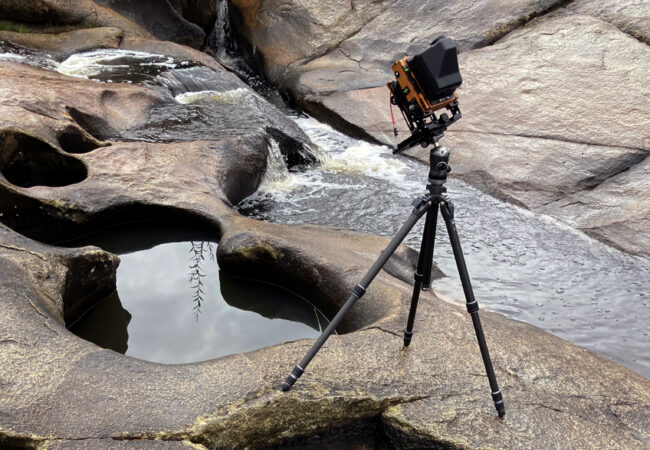
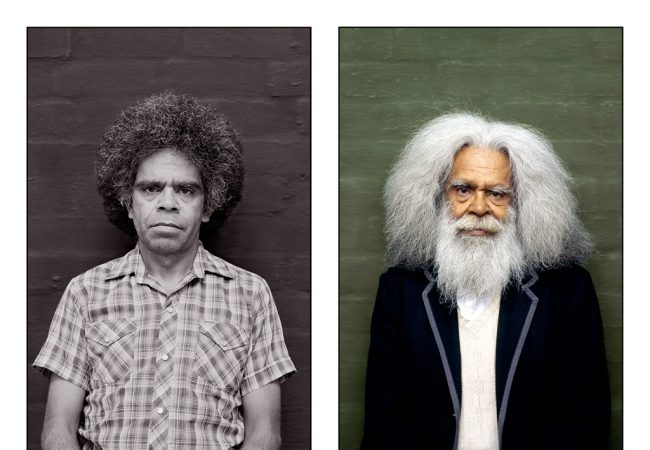
A thought provoking article, Gary. You’ve eloquently photographed a story which is all too familiar in the Australian landscape.
Thanks very much Mark.
I tried to link landscape photography to poetry (Judith Wright), painting (Fred Williams) and aesthetic philosophy to broaden photography’s critical perspective on how the land in Australia has been treated by being primarily used by settler Australians as a resource. This culture, which is one of controlling nature with its culture of conquest and war on nature, can be clearly seen in the history of the Wimmera Mallee.
The book Mallee Country: Land People History by Richard Broome, Charles Fahey, Andrea Gaynor, and Katie Holmes (Monash University Publishing, 2020) provides a good and thorough account of the history of the Mallee lands.